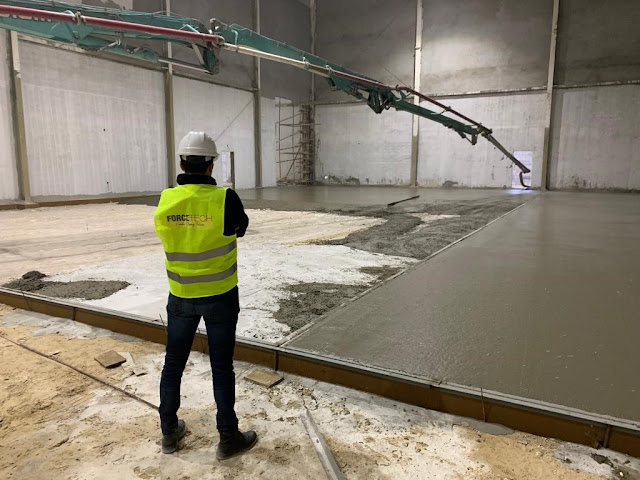Steel Fiber vs. Traditional Reinforcement: Which is Better?
In the realm of construction and civil engineering, an ongoing debate centers around the choice between Steel Fiber Reinforced Concrete (SFRC) and Traditional Reinforcement Methods. This debate stems from the quest for stronger, more durable, and cost-effective construction materials. Steel Fiber and Traditional Reinforcement methods each have their unique characteristics and advantages, but the question remains: which is better? In this comprehensive exploration, we'll delve deep into the world of construction materials to understand the differences, applications, and potential benefits of Steel Fiber versus Traditional Reinforcement.
Understanding Steel Fiber Reinforced Concrete (SFRC)
The Power of Steel Fibers
Steel Fiber Reinforced Concrete,
often abbreviated as SFRC, represents a significant advancement in the
construction industry. This innovation involves incorporating small, discrete
steel fibers into the concrete mixture, enhancing its structural integrity and
ductility.
Versatility in
Applications
One of the compelling aspects of
SFRC is its versatile range of applications. From industrial floors to bridges
and tunnels, SFRC has proven its mettle. It's essential to explore how this
material fares in various construction scenarios to determine its superiority
over traditional methods.
Durability and Resistance
SFRC boasts exceptional
durability and resistance properties. It can withstand harsh environmental
conditions, making it a preferred choice for infrastructure projects that
demand long-lasting, robust materials.
Cost-Effectiveness
Despite being a relatively recent entrant, SFRC can offer cost-effectiveness by reducing the need for traditional reinforcement materials and decreasing labor costs. This factor alone makes it a considerable contender in the Steel Fiber vs. Traditional Reinforcement debate.
Traditional Reinforcement Methods: A Tried and Tested Approach
Reinforcing with Rebar
Traditional Reinforcement typically involves the use of steel rebar or mesh to strengthen concrete structures. This method has been the standard for decades, and it's crucial to understand why it's still relevant.
Proven Reliability
One significant advantage of traditional reinforcement methods is their proven reliability. Builders and engineers have relied on rebar for generations, and its track record speaks for itself in terms of strength and longevity.
Cost Considerations
While SFRC claims cost-effectiveness, traditional reinforcement methods have the edge when it comes to initial material costs. However, it's vital to consider the overall expenses, including installation, maintenance, and potential repairs over time.
Adaptability
Traditional reinforcement methods offer a level of adaptability that has stood the test of time. They can be tailored to specific project requirements, making them a suitable choice for a wide range of applications.
Steel Fiber vs. Traditional Reinforcement: A Comparative Analysis
Strength and Ductility
When comparing Steel Fiber and Traditional Reinforcement, the fundamental aspect to consider is strength and ductility. SFRC offers enhanced tensile and flexural strength, making it a superior choice for structures that require substantial load-bearing capacity. Traditional reinforcement methods, while reliable, might fall short in this aspect.
Crack Control
Cracking is a common concern in construction. UK Steel Fiber Reinforced Concrete excels in crack control, thanks to the distributed fibers that prevent cracks from propagating. Traditional reinforcement methods might not be as effective in this regard.
Speed of Construction
For projects with time
constraints, the speed of construction is a critical factor. Steel FiberReinforced Concrete US can be quicker to install due to the reduced need for
additional reinforcing materials. Traditional methods, with the
requirement for precise placement of rebar or mesh, might take longer.
Environmental Impact
In the modern construction landscape, sustainability is a key consideration. Steel Fiber Reinforced Concrete can reduce the environmental impact by using fewer resources and minimizing waste. Traditional methods, with their reliance on steel, may not be as environmentally friendly.
Conclusion
In the Steel Fiber vs.
Traditional Reinforcement debate, there is no definitive answer to which is
better. The choice depends on various factors, including the specific project
requirements, budget, and environmental considerations. Steel Fiber ReinforcedConcrete UK, with its exceptional strength, crack control, and cost-effectiveness,
is a promising choice for many applications. However, traditional
reinforcement methods continue to be a reliable option with their long-standing
track record.
Ultimately, the decision comes
down to a careful evaluation of the project's needs and goals. Builders,
engineers, and project managers must consider the pros and cons of each method
before making an informed choice. As construction technology continues to
evolve, the answer to the question, "Steel Fiber vs. Traditional
Reinforcement: Which is Better?" may change over time, but for now, both
methods have their place in the construction industry, serving diverse needs
and purposes.

.png)


Comments
Post a Comment